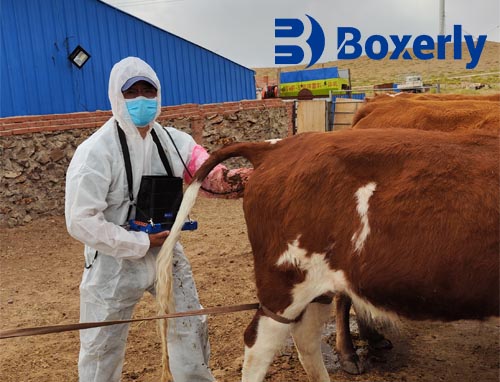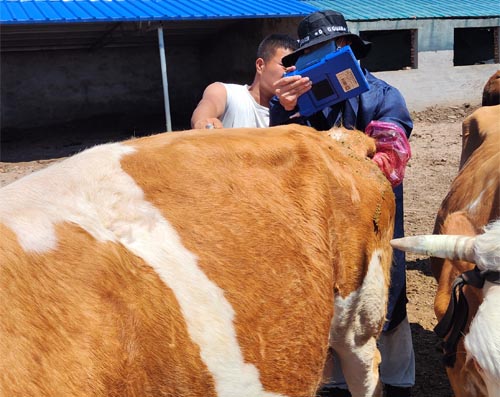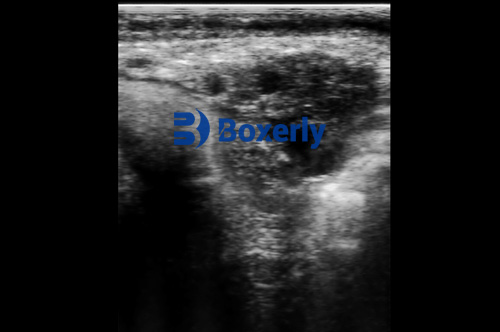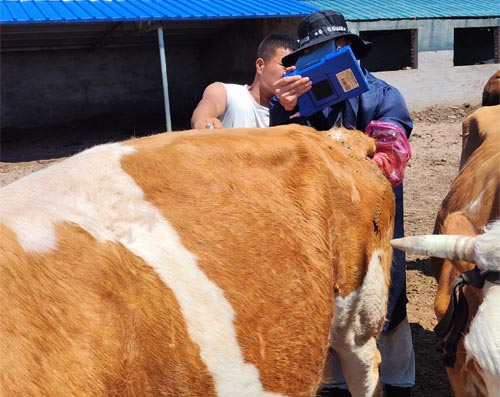Uterine infections are a common problem in dairy and beef cattle, especially after calving. They can significantly reduce fertility, delay breeding, and lead to economic losses. Many infections go unnoticed in their early stages because symptoms are subtle. Bovine ultrasound provides a powerful, non-invasive method to detect uterine infections early, allowing farmers to act quickly and protect both cow health and herd productivity.

Understanding Uterine Infections
Uterine infections occur when bacteria invade the uterus, usually postpartum. Common forms include metritis and endometritis. Left untreated, they can reduce conception rates, increase the number of open days, and even lead to chronic reproductive problems.
Cows may appear healthy but still carry infections that affect fertility. Traditional methods like palpation or observation often fail to detect these subclinical cases. Ultrasound provides a clear picture of the uterine lining, fluid accumulation, and tissue abnormalities, enabling early intervention before problems worsen.
How Ultrasound Detects Infections
Ultrasound allows veterinarians and farmers to see changes in the uterus that indicate infection. Fluid buildup, thickened endometrial walls, and irregular tissue textures can all be detected non-invasively.
Early detection means treatment can start before the infection impacts fertility. For example, cows showing abnormal uterine fluid can receive targeted antibiotics or supportive care. This prevents prolonged infertility and avoids the economic losses associated with delayed conception.
Impact on Fertility and Herd Productivity
Uterine infections can dramatically affect a cow’s reproductive efficiency. Infected cows may fail to conceive or require multiple inseminations. Detecting infections early helps farmers identify which cows need treatment, ensuring they return to normal cycles quickly.
Integrating ultrasound into herd management reduces repeat breeding attempts, lowers open days, and helps maintain consistent calving intervals. Higher fertility rates improve overall herd productivity and support the long-term profitability of the farm.

Reducing Economic Losses
Undiagnosed uterine infections increase veterinary costs, reduce milk yield, and extend breeding cycles. Ultrasound provides a cost-effective solution by identifying problems early, reducing the need for emergency treatment and extensive interventions.
Here’s an example of the economic impact:
| Factor | No Ultrasound Monitoring | With Ultrasound Monitoring |
|---|---|---|
| Time to detect infection | Delayed, weeks or months | Early, within days of onset |
| Breeding success | Lower due to untreated infections | Higher with timely treatment |
| Open days | Longer, milk production loss | Shorter, predictable calving |
| Veterinary costs | Higher due to complications | Lower, early intervention |
Early diagnosis not only saves money but also protects herd health and improves reproductive efficiency.
Improving Cow Welfare
Uterine infections can cause discomfort and stress. Ultrasound helps identify these issues before they affect a cow’s well-being. By treating infections early, cows experience less pain, recover faster, and are less stressed during breeding attempts.
Healthier cows produce better-quality milk, calve with fewer complications, and maintain consistent reproductive performance. Animal welfare improves, which is increasingly important for ethical and sustainable farming practices.

Integrating Ultrasound into Routine Herd Management
For maximum benefits, ultrasound should be part of a routine post-partum check program. Regular scanning of the uterine lining helps detect infections early, even in cows without obvious symptoms.
Farmers can schedule ultrasound examinations at key points after calving to monitor all cows. Proactive monitoring ensures that infections are treated promptly, breeding programs remain efficient, and the herd stays productive and healthy.
Conclusion: A Smart Investment for Herd Health
Uterine infections are a hidden threat to cattle fertility and farm profitability. Bovine ultrasound offers a precise, non-invasive way to detect infections early, enabling timely treatment, improving fertility, reducing economic losses, and supporting cow welfare.
For modern cattle operations, integrating ultrasound into herd management is essential. Early detection of uterine infections ensures smoother breeding cycles, healthier cows, and improved overall herd productivity.
link: https://www.bxlimage.com/nw/1297.html
tags: bovine ultrasound uterine infections cows early detection reproductive disorders metritis detection endometritis monitoring dairy cow fertility herd productivity ultrasound cow health post-calving







